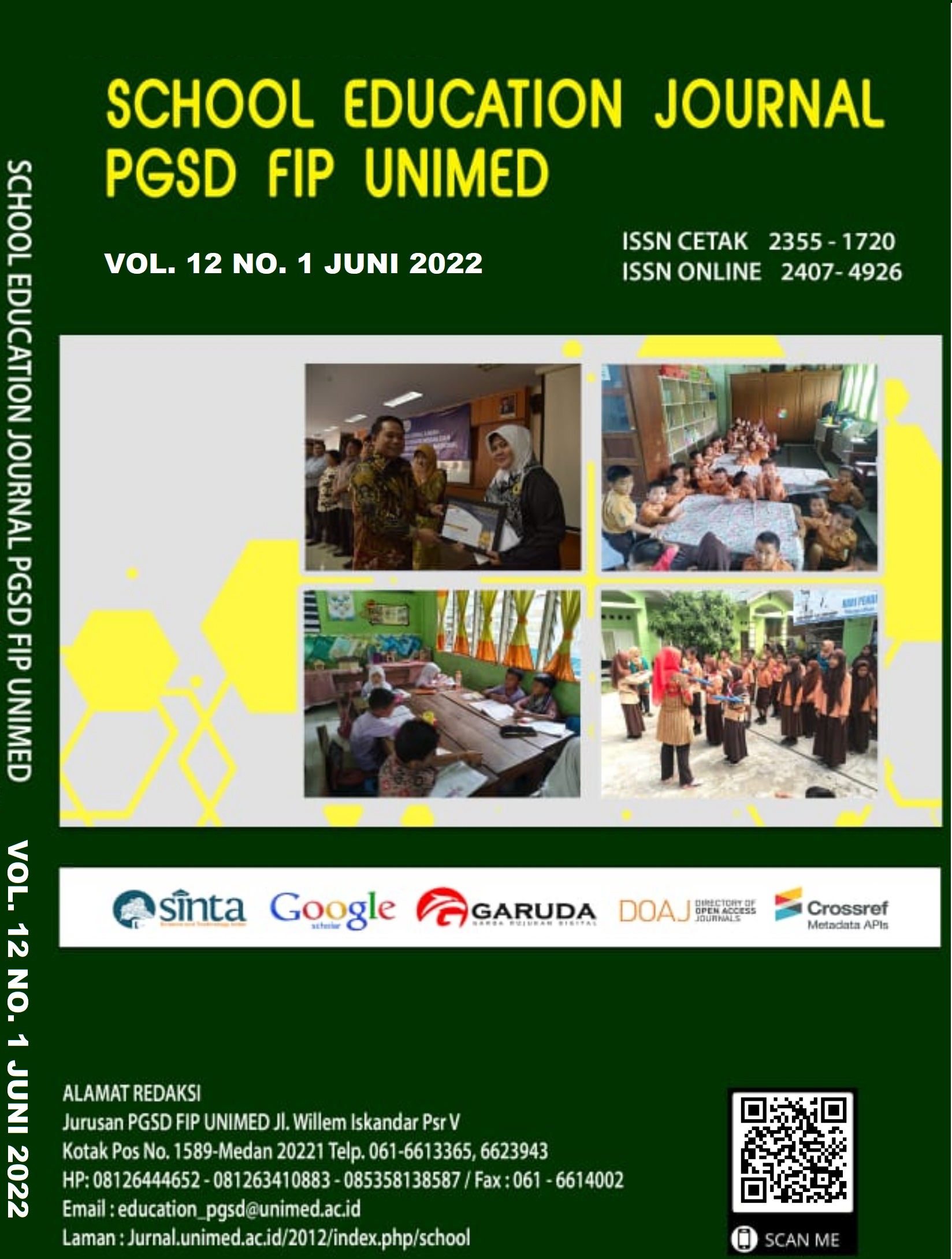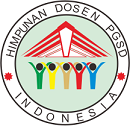PENGEMBANGAN MODEL PEMBATIK MELALUI MEDIA CLASSROOM DI MI MIFTAHUL HIDAYAH
DOI:
https://doi.org/10.24114/sejpgsd.v12i1.30855Keywords:
Model Batik, Google Classroom, MI childrenAbstract
This study aims to describe the development of technology-based learning models through classroom media for elementary/MI children. This study uses a qualitative approach because it aims to provide information, understanding and description of the content and quality of the content that occurs as the target or object of research. The term description is research that is intended to make a description of the events that took place. Data is collected and analyzed and abstracted, and theories will emerge that will show the results of qualitative research findings. Then the results of this journal research show that: First, the development of technology-based learning models is an effort made to develop learning that is in accordance with the demands of an increasingly modern era and full of advanced technology. Second, the use of classroom media on Google is an alternative to continue to carry out learning during this pandemic.References
Ahmad, Kholiqul Amin. (2017). Kajian Konseptual Model Pembelajaran Blended Learning berbasis Web untuk Meningkatkan Hasil Belajar dan Motivasi Belajar. Jurnal Pendidikan Edutama, 4(2).
Ahmad, Suriansyah. (2015). Pengembangan Pembelajaran Berbasis TIK (Proses Dan Permasalahannya. Jurnal Paradigma, Volume 10, Nomor 2.
Ahmad Rusdiana, dkk. (2020). Penerapan Model POE2WE Berbasis Blended Learning Google Classroom Pada Pembelajaran Masa WFH Pandemic Covid-19, Karya Tulis Ilmiah (KTI) Masa Work From Home (WFH) Covid-19 UIN SGD Bandung Tahun 2020.
Amin, Akbar., Nia Noviani. (2019). Tantangan Dan Solusi Dalam Perkembangan Teknologi Pendidikan Di Indonesia. Jurnal Prosiding Seminar Nasional Pendidikan Program Pascasarjana Universitas PGRI Palembang 03 Mei 2019.
Anselm Strauss dan Juliet Corbin. (2013). Dasar-dasar Penelitian Kualitatif; Tatalangkah dan Teknik-teknik Teorisasi Data. Yogyakarta: Pustaka Pelajar.
Ariyanto S. Helianak, Herman Dwi Surjono, (2014). Pengembangan E-Learning Mata Pelajaran Teknologi Informasi Dan Komunikasi (Tik) Di SMA Negeri 3 Kupang. Jurnal Inovasi Teknologi Pendidikan, Volume 1, Nomor 1.
Hutasuhut, Edidon, Dkk. (2020) Pengembangan Model Bimbingan Karir Siswa Kelas 1 Sma Kota Madya Medan Di Era Revolusi Industri 4.0. Medan: SEJ (School Education Journal), 10 (4), 228-296.
Muhammad, Ihsaan Fathoni, Eko Marpanaji. (2018). Pengembangan E-Book Interaktif Mata Pelajaran Teknologi Informasi Dan Komunikasi (TIK) Untuk SMK Kelas X. Jurnal Inovasi Teknologi Pendidikan Volume 5, No 1, April 2018.
Munir. (2017). Pembelajaran Digital. Bandung: Penerbit Alfabeta.
Lexy, J. Moleong. (2008). Metode Penelitian Kualitatif; edisi Revisi. Bandung: Remaja Rosda Karya.
Oenardi, Lawanto. 2000. Pembelajaran Berbasis Web Sebagai Metoda Komplemen Kegiatan Pendidikan Dan Pelatihan, OUneitnaasr,d Vi Loal.w 9a,n tNoo. 1,September 2000 - Pebruari 2001, 44-58.
Saiyah. (2021). Implementasi Aplikasi Google Classroom Pada Mata Pelajaran Ipa Terpadu Selama Pandemi Covid-19 Di Kelas Viii-2 Smp Negeri 2 Tebing Tinggi. Medan: SEJ (School Education Journal), 11 (1), 26-34.
Wayan Santyasa. (2007). Model-Model Pembelajaran Inovatif. Disajikan dalam pelatihan tentang Penelitian Tindakan Kelas bagi Guru-Guru SMP dan SMA di Nusa Penida, tanggal 29 Juni s.d 1 Juli 2007.
Published
Issue
Section
License
Authors whose manuscripts are approved are approved as follows:
- The publication rights for all journal manuscript materials published/published on the SEJ (School Education Journal) E-Journal site are held by the editorial board with the author's knowledge (moral rights remain with the manuscript authors).
- The formal legal requirements for accessing this electronic digital journal article are subject to the terms of the Creative Commons Attribution-ShareAlike (CC BY-SA 4.0) license, which means that E-Journal SEJ (School Education Journal) has the right to store, transfer media/format, manage in the form of a database, maintain, and publish articles without asking permission from the author as long as the author's name remains as the copyright owner.
- Manuscripts published/published electronically are open access for educational, research, and library purposes.













